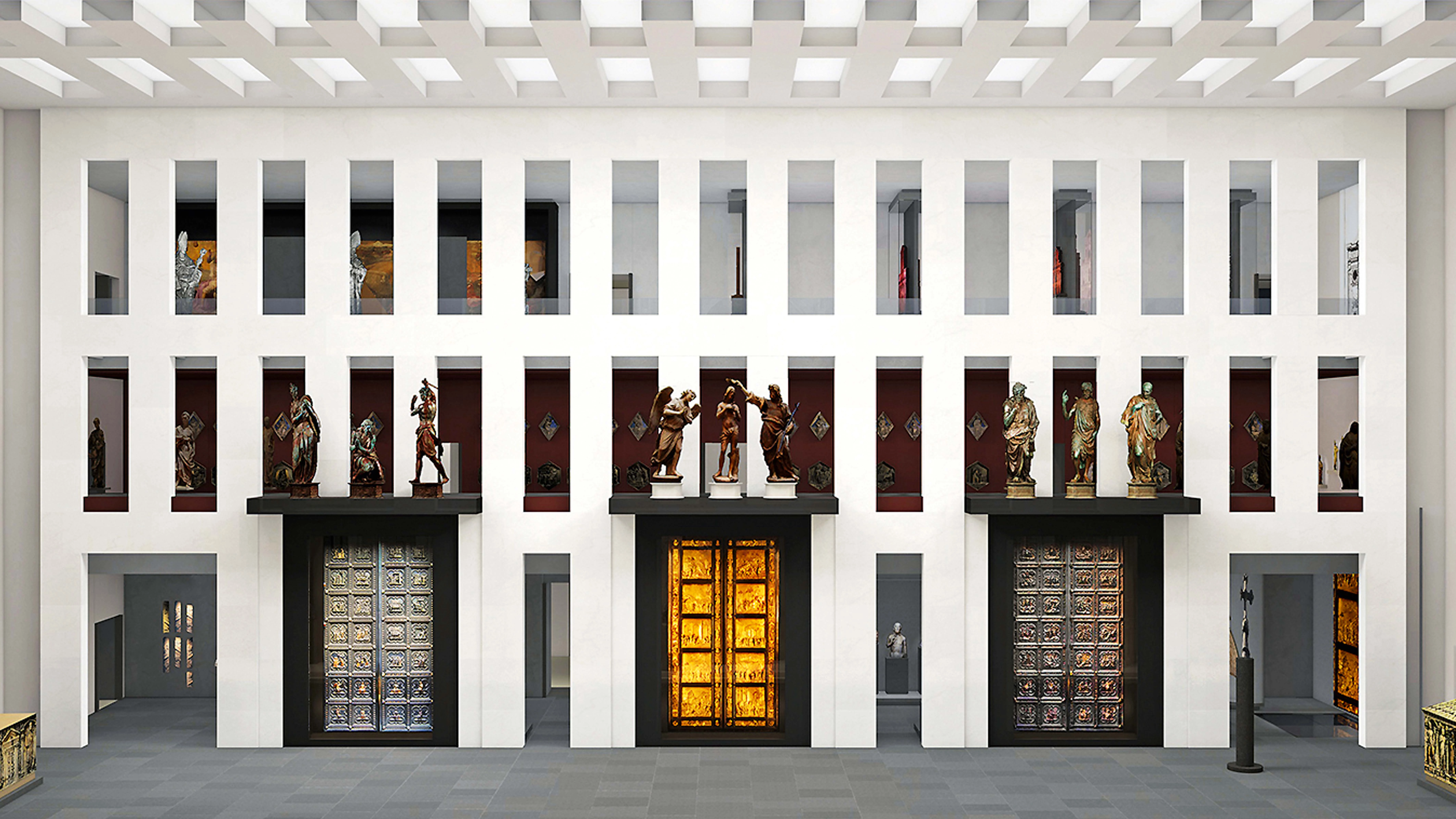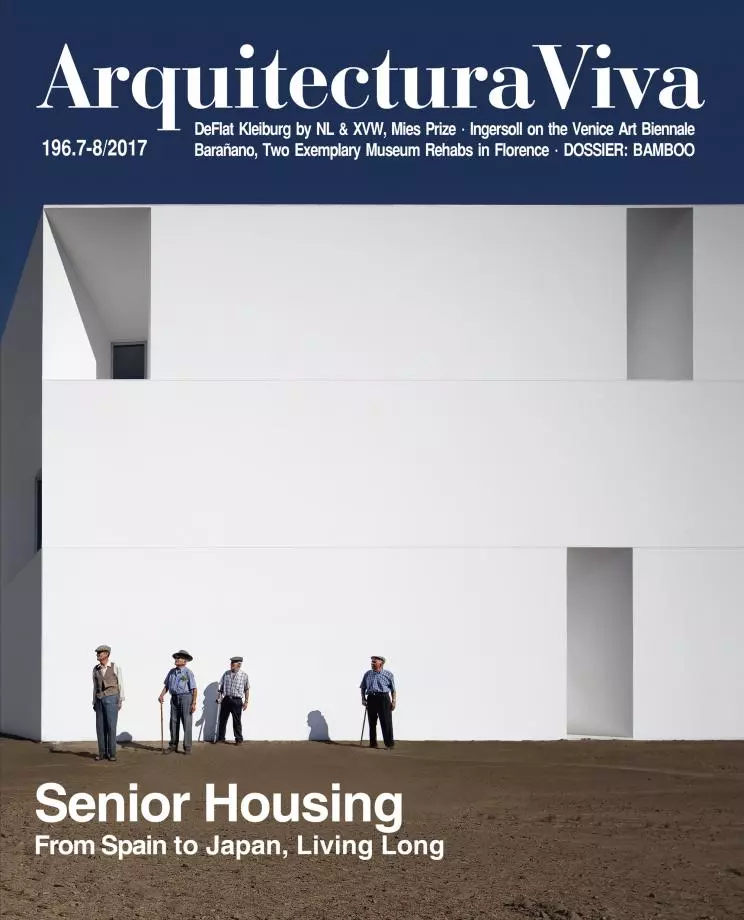In Praise of the Palimpest
Two Exemplary Rehabs in Florence

Natalini Architetti, Guicciardini e Magni Architetti, Museo dell'Opera del Duomo (Florence)
Often in the world of today, great building works go unnoticed just because they are simple, or are not brought to light by critics and media. Let me point out two examples in the realm of Italian museums, and in the quintessential Renaissance city, Florence: the new Museo dell’Opera del Duomo and the new Istituto Ospedale degli Innocenti.
The first one was originally used, since 1296, as home to the Opera del Duomo, an institution founded by the Republic of Florence and formed by builders, artists, and workers tasked with looking after the cathedral building. In 1400, for space reasons, the Opera was moved to its current container, a mansion built from an old countryhouse attached to the workshop of Lorenzo Ghiberti (the same sculptor who made the bronze doors of the Baptistry). It was here, too, in 1500, that Michelangelo sculpted the famous David.
Upon completion of the cathedral (1436), the Opera del Duomo remained active, charged with its upkeep. In 1891 the institution opened its doors to the public, with some of its rooms turned into a museum. In the year 1998 it purchased the adjacent old theater, called the ‘Intrepid,’ that the Grand Duke Leopold had bought in 1779 and that had been used as a garage since 1960.
The enlargement and revamp of the Museo dell’Opera del Duomo has made it possible to increase its useful area from 2,400 to 6,000 square meters, thanks to 25 halls distributed on three floors that can display as many as 750 works of art; all thanks to an investment of 45 million euros that came from the museum’s own resources. The director and author of the museum project is Monsignor Timothy Verdun, while the architectural design is a work of Adolfo Natalini, in collaboration with Piero Giucciardini and Mario Magni.

The museological project is centered on architecture from the very beginning, starting with Arnolfo di Cambio and passing through Filippo Brunelleschi. The first main hall (the one which was a garage and theater) features an extraordinary, life-size reconstruction of the first facade of Santa Maria del Fiore, in accordance with Arnolfo’s first design. In front of it we find the doors and original statues of the Baptistry, brought here to save them from pollution. The great sculptures are placed along the low stretch of the facade, in such a way that they can be read with attention, while the copies are relocated to the original spots, enabling us to view them in their real, intended perspectives, reformulating the original sense of Arnolfo’s sculpture. The enormous volumes of the pieces, the quadrature imposed on the facades – in fact the entire paraphernalia that the critics had perceived as the stuff of a not very gifted sculptor –, are shown here as mere tricks for a view from below. In front, Ghiberti’s panels engage in dialogue with the prophets of Donatello or Nanni di Banco, so easily as to seem like a museological miracle.

The largest and main hall of the Museo dell'Opera del Duomo features original doors and statues of the Baptistry of Florence, as well as a life-size reconstruction of the first facade of Santa Maria del Fiore.
Two staircases have been added to the splendid old one in order to improve circulation as well as space distribution. The upper floor levels present Giotto’s Campanile gallery, which stretches 36 meters long, featuring 16 life-size statues and the 54 panels that originally adorned the tower. The gallery of Brunelleschi’s Dome displays 15th-century wooden models and tools used in the construction of the dome, and also what was the death mask of the great architect. Then comes the gallery of Donatello and Luca della Robbia’s Choir, and the hall of the Silver Altar, with an exhibition of works that were once part of the Treasure. In Verdon’s hands, the museum comes across as a narrative of the history of the architecture of the cathedral, la fabrrica, with its sculptural and pictorial manifestations; a narrative of man’s devotion to divinity.

Extension of Museo dell'Opera del Duomo, Paradise room
Hospital of the Innocents
On the other hand we have the Istituto Ospedale degli Innocenti, a public organization devoted to the protection of children and historical heritage. In 1419 l’Arte della Seta, which was the silk guild, having been bequeathed a thousand florins (the currency that gave the city its prestige) by the banker Francesco Datini Prato, commissioned the architect Filippo Brunelleschi to design and build a place in which to take in and care for orphans and foundlings. Opened in 1445, the Hospital of the Innocents (nocentini was how abandoned children were called) was Europe’s first orphanage.

The architecture and museum design of the Foundling Hospital is by a group of architects called Ipostudio, which won an international competition organized for the purpose in 2008, and has managed to create a museum that presents both a social history and a history of architecture. The building reopened in June 2016, after a refurbishment costing 13 million euros.

In a very rational and balanced way, Ipostudio binds together all the previously dispersed functions and spaces of the institution, thanks to an innovative restoration and renovation project. So the multipurpose historical building has been turned into a functional building that respects the close relationship between the history of the institution, architectural heritage, Brunelleschi’s work, the legacy of archives, historical and artistic, and ultimately all the dissemination and visitor-related activities of the institution. All this in the 4,900 square meters of the new Museo Ospedale degli Innocenti, organized on three floor levels and accommodating exhibitions, temporary shows, and educational activities.

A visit of the building raised by Brunelleschi in 1445 begins in the vaulted hall of the basement and ends up in the attic, where one has a view over the dome, after crossing the art gallery that takes up the space under the roof.
At the start of a visit to the museum, one finds an archive turned into a kind of semicircular altar of birch wood, with 140 vitrines displaying, like votive offerings, objects identifying the innocent homeless children taken in by the institution (medallions, coins, rings, brooches, prints, small crucifices, etc.). Through two new entrances on Piazza Santissima Annunziata, plus new vertical, inter-floor connections, the museum has new zones for visitors and new services for the city.
The two new entrances, marked by mechanically activated bronze doors, invite one to step into the building and solve the problem of access for different groups of users. New stairs and elevators lead to all five floors of the building. The staircase is a steel structure painted white, clad in the interior with Matraia stone. This vertical circulation element – which reaches all floors, giving access to areas that otherwise would be hard to reach – becomes a kind of connector of six hundred years of continuous mutation.
On the third floor we find the main exhibition hall, the art gallery, a place which through its form and use wraps up the museological narration. This gallery enhances the Hospital’s collection of paintings, reinforcing the visual interplays that are established through the series of windows. There are lots of exceptional points of view along one’s journey through the history of the orphanage and its foundlings in this new hospital-museum.

On the top floor, thanks to a new glass volume, Ipostudio rediscovers and gives back to the city a great gallery, called Verone, which once upon a time was a loggia where clothes were hung out to dry and children played, and now is a café. Access to this magnificent place is through the adjacent porch, through a path characterized by its wooden floor that stretches on to the actual loggia. The many changes that have been made on the building produce a positive impression of layers (of history and of architectural design) which ultimately are a testimony of its continuous evolution, its vitality, and its history. The Verone has recovered its original panoramic opening on both sides, and we enjoy a fine view of the city and one of its symbols: Brunelleschi’s Dome.

The Ospedale is no simple museum with custody of masterpieces (by the likes of Ghilandaio, Botticelli, or Della Robbia), but a social institution expressing many human experiences. The refurbishment project has managed to contextualize works of art in historical evolution within the theme of architectural history as an essential element of the institution’s reception function. The institution thus embodies the very essence of the Renaissance: creating a home for orphans is to put the child (or the human being) at the center of the universe – the basic meaning of Humanism and cultural Renaissance.
Kosme de Barañano, critic and historian, recently published Criterios sobre la historia del arte (Kailas, 2016).






